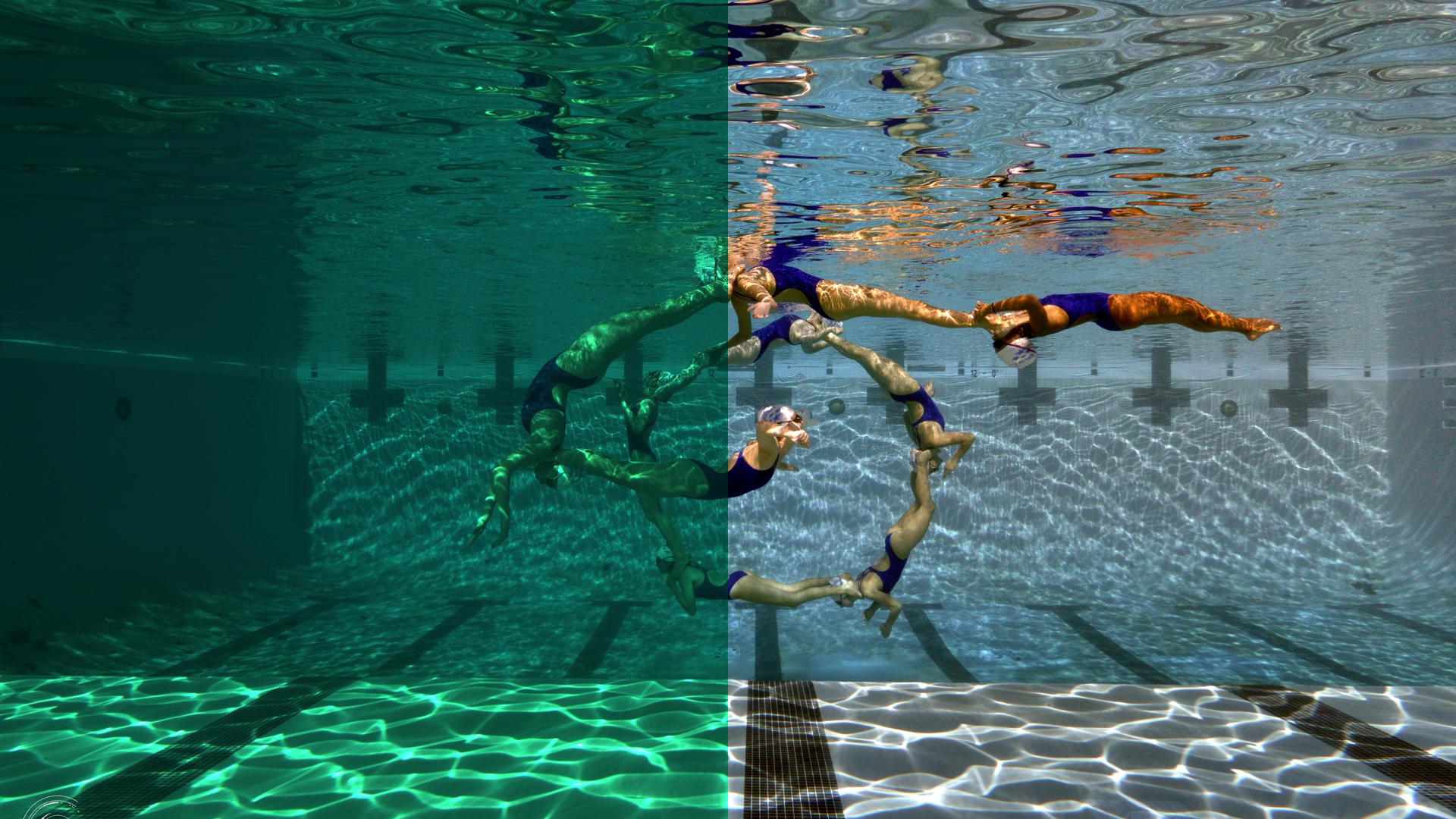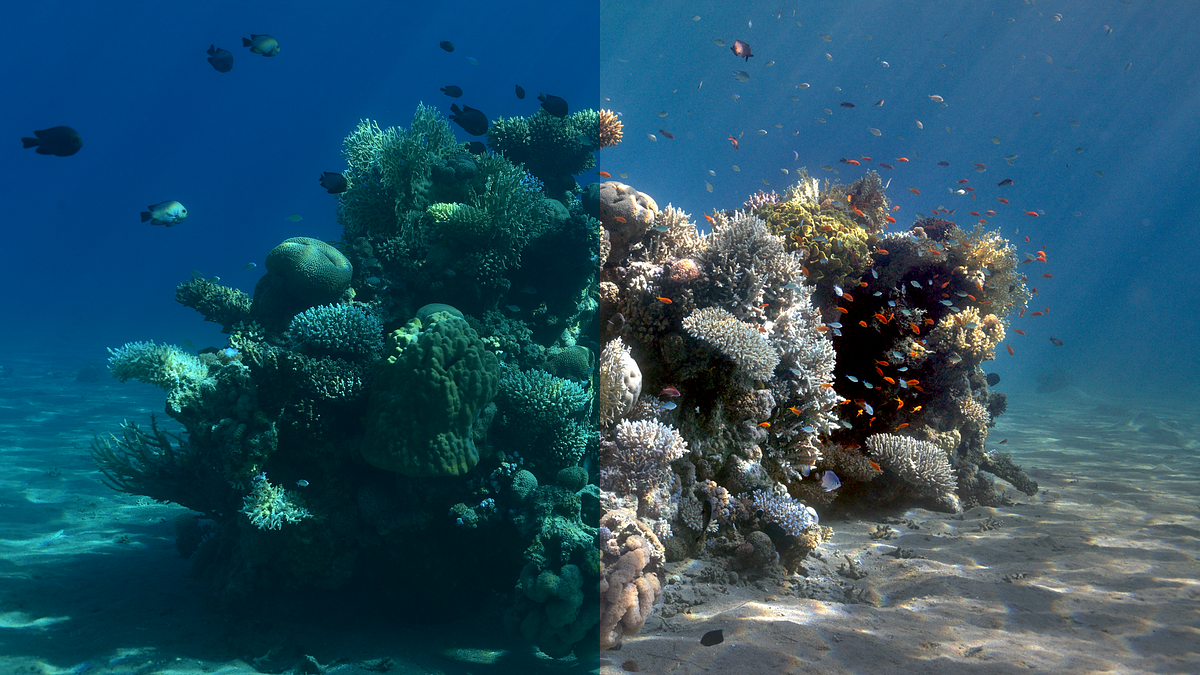Let’s get one thing straight: this is not a Photoshop tutorial! Sure, a fair number of photographers know the tricks to improve the quality of underwater photos, and that’s good enough for the human eye. But for those developing machine learning algorithms to classify and identify objects in images, such techniques are wholly insufficient. I challenge anyone reading this to think of a single application of machine learning and computer vision in underwater imaging and video. It’s harder than you think. The reason, according to Derya Akkaynak and Tali Treibitz, is that “no robust algorithm currently exists” to remove the noise persistent in aquatic imagery reliably…
…until now.

What’s the problem?
“An underwater photo is the equivalent of one taken in air, but covered in thick, colored fog, subject to an illuminant whose white point and intensity changes as a function of distance.” Current models for improving underwater photography expand on models in regularly-observed atmospheric conditions. However, these models do not account for the extreme impact water has on light. Did you know that the speed of light through water is approximately 46.2 thousand miles per second slower than through air?
#computer-vision #photography #data-science #technology #machine-learning #deep learning
